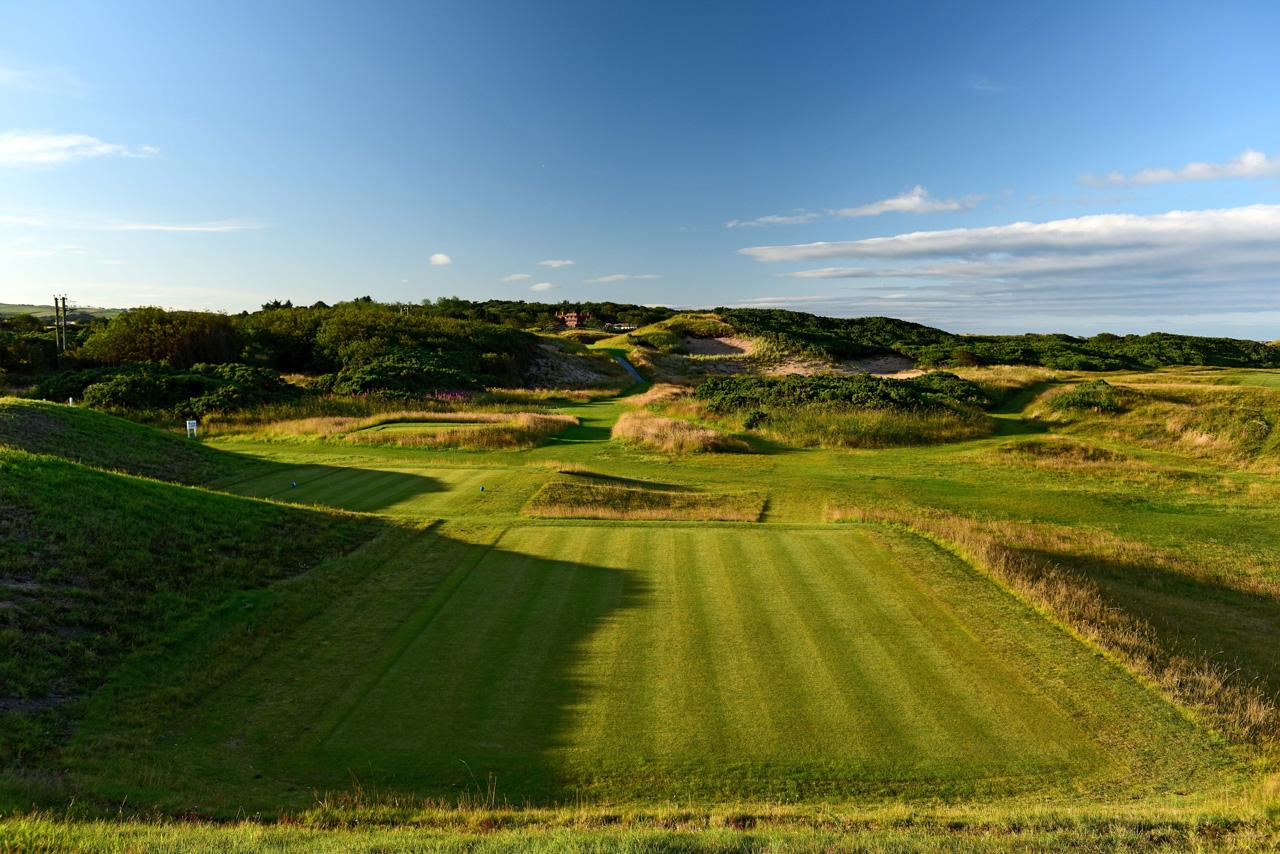Royal Troon
Donald Steel & 该公司在2004年公开赛和麦肯齐之前为皇家特伦提供了建议 & 艾伯特继续为2016年公开赛(第9届在高尔夫球场举行的公开赛)提供意见,在那场比赛中,亨里克·斯滕森和菲尔·米克尔森展开了精彩的较量.
和许多历史悠久的球场一样,这条球场从最靠近海岸线的前九洞开始. 事实上,没有哪个高尔夫球场的第一发球台离海滩的边缘更近. 前九洞还拥有英国公开赛上最著名的三杆洞,也是最短的洞,只有123码,而在2016年的周六公开赛上,这个洞的长度只有100码. 奇妙的邮票让即使是最高水平的高尔夫球手也会想到,如果短铁连一根头发都偏离了线,会发生什么悲剧.

However, 后九洞提供了最具挑战性的考试,每位年度冠军高尔夫球手都必须通过考试才能将红葡萄酒壶举起来. In 2004, the 10th, 11洞和12洞排在第三位, 分别是第一和第二难的洞. 那三个洞是多么大的考验啊. 后九洞在13号、15号和18号洞继续打出强劲的4杆.
如果对球场偶尔有任何疑问,那就是前几个洞太容易了,但球场有各种形状和大小,每种布局都有自己的节奏. At Royal Troon, 每个人都知道,得分通常必须在回合的早期进行. 这本身也带来了压力,如果小鸟没有落下,就有可能失去耐心.
2004年英国公开赛之后,英国皇家高尔夫俱乐部(The R&A, 这与一项对所有公开赛场地的研究一致,该研究旨在评估如何改进这些场地,使其最适合现代比赛. 由于各种原因,所有伟大的球场都在多年的时间里不断发展,因此,只要这些研究符合球场和俱乐部的传统,就应该间歇性地进行评估. 任何调整都必须牢记这样一个事实,即冠军争夺战利品的球场必须是俱乐部会员和游客在99%以上的时间里享受比赛的地方.
在皇家特伦值得注意的一个方面是,对旧课程的审查并没有导致进行重大的延长练习. 2004年的球场长度为7175码,2016年的球场长度为7190码. 人们只认为有必要延长几个孔,而且长度不大.


审查包括对这门课程的演变和发展进行尽可能多的历史研究. 俱乐部的档案被查阅了, 评估旧剪报, 对过去的航拍和地面照片进行了来源和分析,发现了1923年英国公开赛的精彩布局图. 此外,记忆力较好的俱乐部成员和前绿棒队员也接受了测试. 这有助于形成俱乐部和R考虑的提案&A,并导致实施了上述小册子中所述的某些调整.
虽然这门课有了一些新进展, 绝大多数的调整可以被描述为恢复旧的特征和特征. 源自普雷斯特威克的绿地管理员, Charlie Hunter, 特隆的专业人士乔治·斯特拉斯和威利·弗尼在特隆进行了早期的工作,规划和发展了这门课程, 詹姆斯·布雷德(James Braid)负责强化1923年第一届公开赛的布局. 特伦的波特兰球场, 最初是由威利·弗尼在1895年提出的, 由阿利斯特·麦肯齐博士于1921年重新设计,并用于1923年英国公开赛的预选赛. 在特隆的时候,俱乐部接受了布朗博士的建议. 麦肯齐对旧球场第10洞的沙坑进行了改造. 这是他在公开课上提供意见的唯一明显特征.
2016年,第145届英国公开赛对每个洞都进行了微调, 课程的主要变化集中在9日, 10th and 15th holes, 10号和15号的项目涉及到旧特征的修复. 9号果岭后面的树木被一个遮阳板取代, 10号洞的旧沙坑被修复,15号洞的发球台和球道的第一部分被移到了14号洞的左边, 修复旧的孔线.
